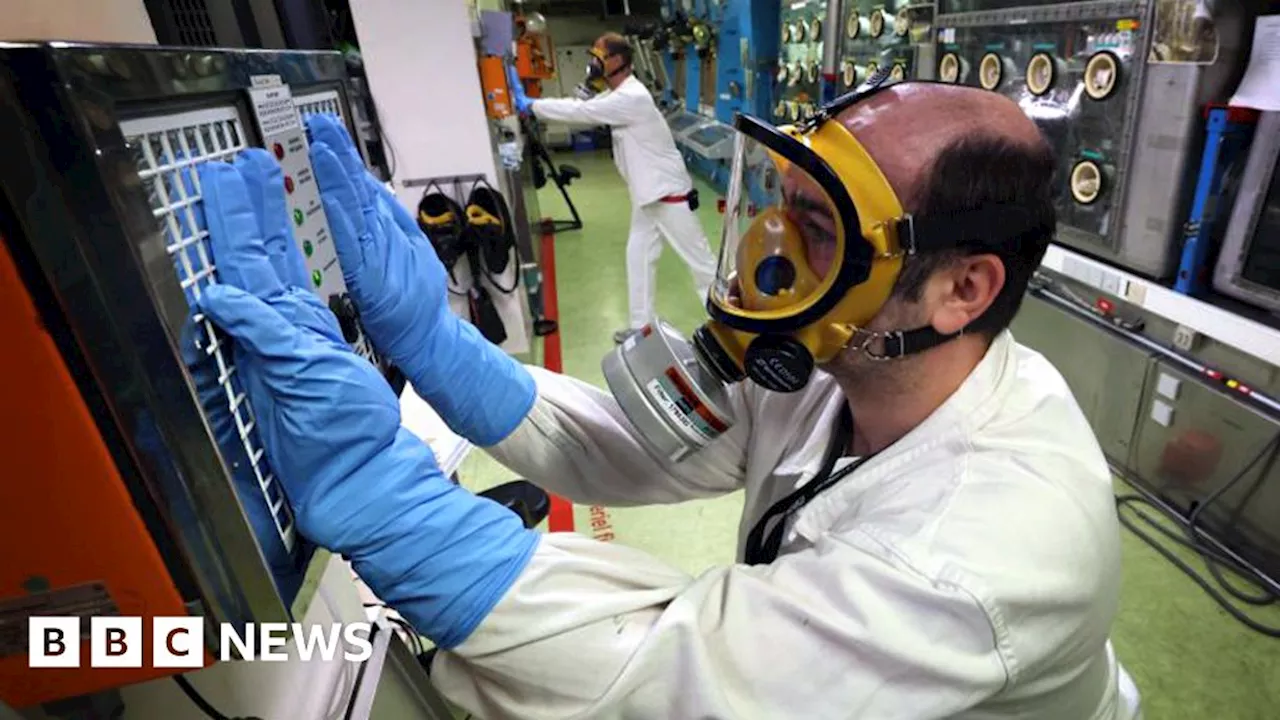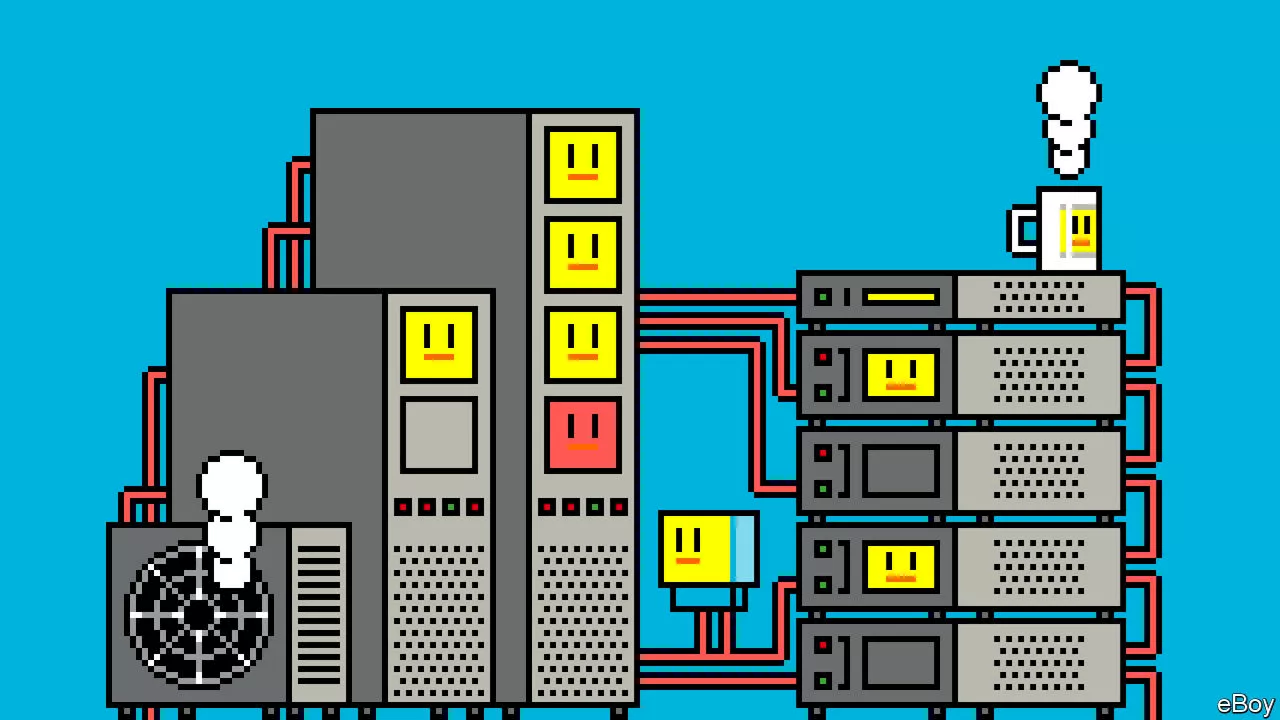But can this continue into the age of AI?
into one of 42 data halls on a plot of 74,000 square metres near Sydney, Australia, you become immersed in a sterile science-fiction world. Towering rows of black server cabinets stand in meticulous order, containing thousands of whirring hard drives, the beating metal hearts of a massive “hyperscale” data centre. Overhead, fibre-optic cables carry data down into each cabinet; metal wires, electricity. Outside a substation delivers power; batteries and generators provide backup.
Outside China, the pace of data-centre construction has been taxing resources to the point that some governments have felt compelled to slow it down. In 2019 Singapore temporarily halted the construction of new data centres, concerned that building more might make it difficult to fulfil its commitment to achieving net-zero emissions by 2050.
Such improved efficiency comes partly from improved thriftiness in computation. For decades the energy required to do the same amount of computation has fallen by half every two-and-a-half years, a trend known as Koomey’s law. And efficiencies have come from data centres as they have grown in size, with increasingly greater shares of their energy use going to computation.Unfortunately, some efficiencies of scale have come at the expense of another important resource: water.
Such investments are vital because renewable energy and data centres are far from a perfect match. A data centre is expected to be running 99.982% of the time, so it needs a steady and certain stream of power. Much of renewable energy is variable, dependent on the sun shining and the wind blowing. Running completely on clean energy will require other technologies to fill the gaps.
Tech firms are also playing a leading role in another emerging climate-friendly technology, durable carbon-dioxide removal . This involves taking carbon dioxide out of the atmosphere and storing it somewhere in a safe way that keeps it from ever getting back there. In 2020 Microsoft declared its intention to use the technology to help reach its goal of going “carbon negative”.
Australia Latest News, Australia Headlines
Similar News:You can also read news stories similar to this one that we have collected from other news sources.
 Future data centres may have built-in nuclear reactorsAs AI uses more electricity, new data centres could have their own nuclear power stations.
Future data centres may have built-in nuclear reactorsAs AI uses more electricity, new data centres could have their own nuclear power stations.
Read more »
 US stocks drop and Treasury yields jump as inflation data shakes rate betsConsumer price rise of 3.1% in January outpaces market expectations
US stocks drop and Treasury yields jump as inflation data shakes rate betsConsumer price rise of 3.1% in January outpaces market expectations
Read more »
 Data-driven app results in 25% fewer emergency hospital admissions from care homesThe use of a digital remote monitoring technology in care homes has been found to reduce hospital A&E attendances by 11% and emergency admissions by 25% in a new study from the Health Data Research UK (HDR UK) Better Care program, published today in Age and Ageing.
Data-driven app results in 25% fewer emergency hospital admissions from care homesThe use of a digital remote monitoring technology in care homes has been found to reduce hospital A&E attendances by 11% and emergency admissions by 25% in a new study from the Health Data Research UK (HDR UK) Better Care program, published today in Age and Ageing.
Read more »
 Europe's largest caravan club admits wide array of personal data potentially accessedExperts also put an end to social media security updates
Europe's largest caravan club admits wide array of personal data potentially accessedExperts also put an end to social media security updates
Read more »
 Data show significant prevalence of sleep apnea among cardio-oncology patientsSleep apnea is prevalent among cardio-oncology patients who are at higher risk for congestive heart failure from cancer therapy, according to a new study being presented at the American College of Cardiology Advancing the Cardiovascular Care of the Oncology Patient course.
Data show significant prevalence of sleep apnea among cardio-oncology patientsSleep apnea is prevalent among cardio-oncology patients who are at higher risk for congestive heart failure from cancer therapy, according to a new study being presented at the American College of Cardiology Advancing the Cardiovascular Care of the Oncology Patient course.
Read more »
 Crashmap data shows Nottinghamshire's most dangerous roadWe have identified several parts of the road where multiple incidents have occurred
Crashmap data shows Nottinghamshire's most dangerous roadWe have identified several parts of the road where multiple incidents have occurred
Read more »
